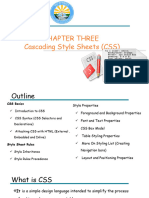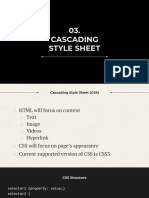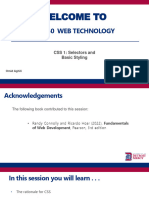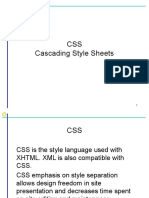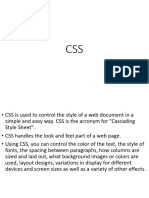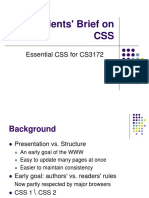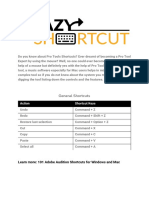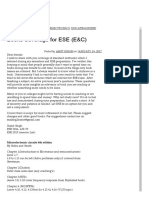0% found this document useful (0 votes)
17 views41 pagesComp 1537 - Week 2 - Css Basics
Uploaded by
Yogita TiwariCopyright
© © All Rights Reserved
We take content rights seriously. If you suspect this is your content, claim it here.
Available Formats
Download as PDF, TXT or read online on Scribd
0% found this document useful (0 votes)
17 views41 pagesComp 1537 - Week 2 - Css Basics
Uploaded by
Yogita TiwariCopyright
© © All Rights Reserved
We take content rights seriously. If you suspect this is your content, claim it here.
Available Formats
Download as PDF, TXT or read online on Scribd
/ 41






